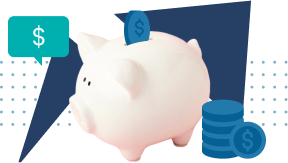The usually good Felix Salmon wrote a piece that I disagreed with called: Don’t worry about cov-lite loans. This is what I wrote as a response:
Ask a loanholder, “All other things equal, would you rather have a cov-lite loan or a normal one?” The answer will always be “Normal, of course. Why are you asking such a dumb question?”
Loanholders would prefer more defaults with lesser severity than fewer with higher severity. What is flexibility to the borrower is a higher degree of expected credit costs to the lenders.
To make this general, I have to explain to you the four phases of competition in uncertain outcomes. I know I’ve written about this before, but I can’t remember where. It applies to a wide number of phenomena, including insurance underwriting and fixed income investing.
Phase 1: the market is offering a bargain in yields relative to normal default costs, and terms & conditions are firm. More competition causes prices to rise & yields to fall.
Phase 2: the market is fully priced in yields relative to normal default costs, and terms & conditions [covenants] are firm. More competition causes terms & conditions to erode. Conservative firms end new purchases. Assets with good terms get premium pricing.
Phase 3: the market is fully priced in yields relative to normal default costs, and terms & conditions [covenants] are soggy. More competition causes some to speculate that “maybe things won’t be so bad, besides, we have money to put to work.” Conservative firms sell existing positions.
Phase 4: Market crashes, defaults are realized. Lower quality assets lose more money. Conservative firms buy assets at a discount from posers who thought they knew what they were doing, some of which are now broke.
So, no Felix, the presence of cov-lite loans indicates that we are in phase 2 at minimum. I think we are in phase 3. I have sold my loan funds for clients last year — we are on borrowed time now.
The same sort of thing happens with insurance underwriting, and I even think bull markets in stocks. After a disaster, insurance surplus levels are low, and pricing is generous, with terms & conditions tight. Additional competition lowers profitability to levels that justify the cost of capital employed. After that, pricing stays at that level, and terms and conditions deteriorate, until they can decline no more. After that, pricing deteriorates further until the next disaster uncovers their folly. Conservative insurers drop out before the disaster, and return capital to shareholders rather than writing bad business.
With bull markets in stocks the first phase is disbelief, the next phase is belief. During that phase, parties lessen risk controls and buy what is hot. In the last phase, valuation plays little role for the marginal decision-makers, until the bull market peaks.
Maybe I am overgeneralizing here, but to me there seems to be an inflection point in bull markets where in order for equity managers to compete, they toss away risk discipline. After that, managers stretch their willingness on valuations.
In closing, two articles that relate to this:
Both of these articles make me think we are in the last phase of a bull market. Valuation is getting ignored. Be wary, and play some defense, but avoid the idea that traditional defensive stock types will be defensive, particularly with low volatility and dividend paying stocks.
By David Merkel, CFA of Aleph Blog












